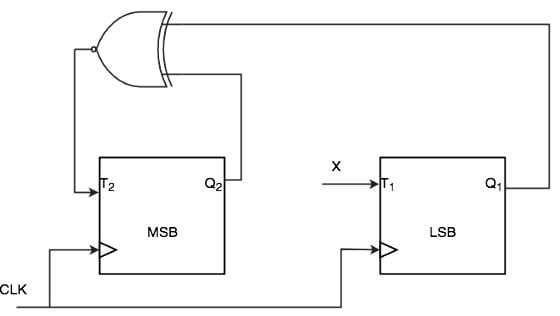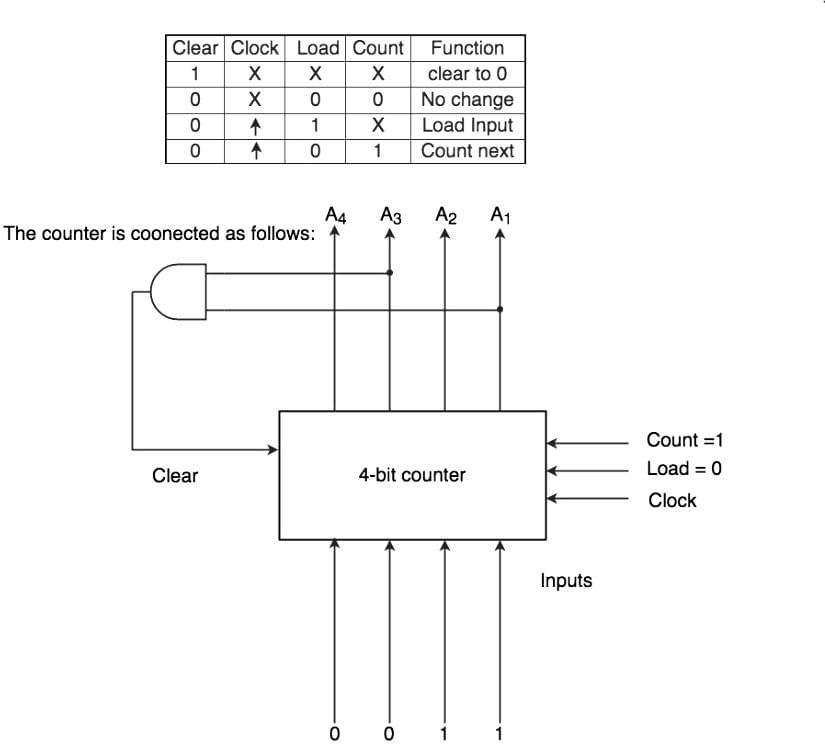UPSC Exam > UPSC Tests > Test: Counters - UPSC MCQ
Test: Counters - UPSC MCQ
Test Description
10 Questions MCQ Test - Test: Counters
Test: Counters for UPSC 2025 is part of UPSC preparation. The Test: Counters questions and answers have been prepared
according to the UPSC exam syllabus.The Test: Counters MCQs are made for UPSC 2025 Exam.
Find important definitions, questions, notes, meanings, examples, exercises, MCQs and online tests for Test: Counters below.
Solutions of Test: Counters questions in English are available as part of our course for UPSC & Test: Counters solutions in
Hindi for UPSC course.
Download more important topics, notes, lectures and mock test series for UPSC Exam by signing up for free. Attempt Test: Counters | 10 questions in 10 minutes | Mock test for UPSC preparation | Free important questions MCQ to study for UPSC Exam | Download free PDF with solutions
Test: Counters - Question 1
Consider the partial implementation of a 2-bit counter using T flip-flops following the sequence 0-2-3-1-0, as shown below

To complete the circuit, the input X should be

Detailed Solution for Test: Counters - Question 1
Test: Counters - Question 2
The control signal functions of a 4-bit binary counter are given below (where X is “don’t care”) The counter is connected as follows:

Assume that the counter and gate delays are negligible. If the counter starts at 0, then it cycles through the following sequence:

Detailed Solution for Test: Counters - Question 2
Detailed Solution for Test: Counters - Question 3
Detailed Solution for Test: Counters - Question 4
Test: Counters - Question 5
What is the maximum possible range of bit-count specifically in n-bit binary counter consisting of ‘n’ number of flip-flops?
Detailed Solution for Test: Counters - Question 5
Detailed Solution for Test: Counters - Question 6
Detailed Solution for Test: Counters - Question 7
Detailed Solution for Test: Counters - Question 8
Detailed Solution for Test: Counters - Question 9
Test: Counters - Question 10
The parallel outputs of a counter circuit represent the _____________
Detailed Solution for Test: Counters - Question 10
Information about Test: Counters Page
In this test you can find the Exam questions for Test: Counters solved & explained in the simplest way possible.
Besides giving Questions and answers for Test: Counters, EduRev gives you an ample number of Online tests for practice
Download as PDF














